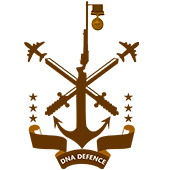The SSB Interview is a five-day interview procedure in which a candidate is evaluated using a variety of approaches such as a psychologist exam, GTO exercises and a personal interview. The SSB/AFSB/NSB procedure is the same and these boards recommend applicants for the Army, Air Force and Navy, respectively.
The SSB’s selection procedure is based on highly scientific and well-developed methodologies that try to examine an individual’s personality qualities in light of the Defence Forces’ requirements.
General Marking System Applicable to OIR Test
The SSB employs a unique assessment system, unlike the traditional marking we encounter in school or college tests. This type of marking occurs solely during the Officer Intelligence Rating (OIR) test which is part of the screening process.
Here, assessors assign marks after each answer, deviating from the cumulative scoring common in conventional tests. For instance, if a candidate answers 40 out of 50 questions correctly, they receive 80% marks.
Marking System for the Psychology Test, Group Tasks and Interview
To illustrate the marking system for the psychology test, group task and interview, we will use a psychological examination as an example. The process is the same for both GTO and IO. After reviewing all of the responses, the psychologist determines if a candidate is sufficient in all 15 OLQs or in some but not in others.
If a candidate is deficient in several OLQs, he will be marked as ‘Not Recommended’ and will receive the appropriate marks. The insufficient OLQs would be clearly indicated and the assessor would have taken notes on the reasons for the assessment which would be significant in the ‘Conference’ when each candidate’s evaluation would be examined and a final decision on selection/rejection made.
SSB Assessment
Assessors are quite clear on the definitions of OLQs and how to assess them. The system is quite scientific. However, what defines acceptable in a certain quality cannot be objectively determined. Each assessor has this mental benchmark and assigns marks to candidates in the 15 OLQs. It then becomes a subjective exercise.
In the psychological test, if an assessor is unsure about a candidate’s evaluation, he can contact a psychologist colleague. The GTO or IO, on the other hand, does not have the option of seeking a second opinion since he is required to assess a candidate’s OLQs as they perform.
Three Broad Categories of Assessment
Based on the assessment, an applicant is put into one of three major categories:
• Clearly unsuitable for selection.
• Borderline case who may be recommended if the other two assessment approaches determine him to be adequate.
• Clearly suitable for selection.
Invariably, a candidate who is clearly unfit/fit by one approach would have been judged similarly by the other two ways and hence would have been rejected/selected without much discussion in the ‘Conference’.
Variations in evaluation are more possible in a borderline case since he has been deemed marginally unsuited for selection by an assessor but there is nothing fundamentally wrong with his personality. Such a candidate would be recommended or rejected based on the evaluation by the other two procedures and the debate in the ‘Conference’ to reach a consensus.
Wrapping Up
In conclusion, understanding the marking scheme procedure for SSB interviews reveals the complex and subjective nature of the assessment process. Aspirants after learning this marking scheme procedure gain insights into the careful considerations made by assessors in determining the suitability of candidates for the esteemed Defence Forces.


